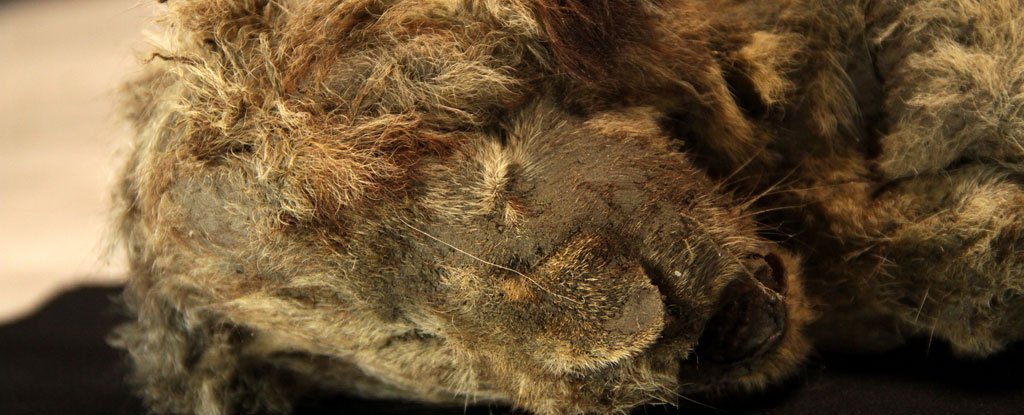A nearly 28,000-year-old cave lion cub discovered frozen in Siberian permafrost is so well preserved you can still see every whisker it has.
Researchers in Sweden believe the cub, nicknamed Sparta, is one of the best-preserved Ice Age animals ever discovered. Their teeth, skin, and soft tissues have all been mummified by the ice. Even their organs remain intact.
Sparta is one of several cave lion cubs (Panthera spelaea) found buried in the permafrost of Yakutia, which lies in the northeast corner of Russia. It was discovered in 2018 by local resident Boris Berezhnev, who was looking for ancient mammoth tusks in the tundra.
frameborder=”0″ allow=”accelerometer; autoplay; write clipboard; encrypted media; gyroscope; picture in picture; web-share” allowfullscreen>
As wildlife hunting and trade become more restricted, “tusk hunters” like Berezhnev have begun searching for ancient ivory in the frigid north.
with climate change With the weakening of the permafrost and the lengthening of the tusk hunting season, we’re finding more and more ancient remains—and not just of woolly mammoths.
In recent years, residents have moved to Siberia woolly rhinos, wolvesBrown bears, horses, reindeer and bison from the permafrost, and some of these carcasses are up to 40,000 years old.
Apparently, these icy steppes were once home to numerous large mammals. In fact, a year before he found Sparta, Berezhnev found another cave lion carcass just 15 meters away near the Zemyuelyakh river.
This one, called Boris, showed a bit more damage, possibly from his permafrost lair collapsing, but it was still remarkably intact.
frameborder=”0″ allow=”accelerometer; autoplay; write clipboard; encrypted media; gyroscope; picture in picture; web-share” allowfullscreen>
Researchers in Sweden who subsequently helped analyze the carcasses estimate that both Boris and Sparta are around one to two months old. However, despite their physical proximity and similar appearances, Boris is believed to be around 15,000 years older, more or less a few centuries.
Today, what little we know about cave lions comes mostly from fossils, footprints, and ancient cave art.
Mummified bodies found in the permafrost are some of the best evidence we have of their existence. Their frozen carcasses look remarkably similar to modern lions in many ways, only on a much larger scale and with a much warmer coat. But one of the most iconic features of African lions, their mane, seems to be absent from cave lions.
In fact, early human artwork from this period suggests that cave lions rarely wore manes, or when they did, they were extremely discreet. Some Ice Age paintings, for example, show dark color patterns on the cave lion’s face, but it’s unclear what that represents.
Boris and Sparta are both juvenile cave lions, meaning it’s hard to tell how their coats would have evolved as they got older. Aside from a dark coloration on the back of their ears, researchers say they’re mostly covered in yellowish-brown fur.
If the young had had the chance to grow up, their fur would probably have turned a lighter gray to help them camouflage themselves in the cold Siberian arctic.
The presence of a mane is important because it might tell us something about cave lion social structures. For example, whether they live alone or in groups with clear hierarchies.
Scientists are still debating whether cave lions roamed the Siberian steppes alone or in packs like modern African lions during the Ice Age.
There is a particular painting in France’s Ice Age Chauvet Cave that depicts nearly a dozen cave lions, both male and female, hunting bison.
“Hunting in groups can be more effective than hunting individually when the prey is large, and cave lions would have had many such prey species available in their ecosystem, for example mammoths and rhinos, when no other options were available to them,” the researchers said wrote in a study published in 2021 describing the find.
“Additionally, large packs would have helped protect their prey from competition and also protect the young and young from predators.”
At the moment this is all just a guess. Although we’ve found some amazingly intact cave lions in recent years, we still don’t have enough information about these extinct predators to draw conclusions about their social structures.
Maybe one day that could change. We may discover another cave lion with a clue to their long-lost life. Or maybe one day we will successfully bring cave lions back to life.
“There is a very realistic chance of recreating cave lions, and it would be much easier than cloning a woolly mammoth,” said paleontologist and one of the study’s authors, Albert Protopopov told the Siberian time in 2021.
Some scientists have suggested doing the same with mammoths, but cave lions are a much younger species. Protopopov suggests that we could complement their clones with some genes of modern African lions, which makes the job a bit easier.
This is obviously a controversial idea, and the reality of it is probably a long way off.
For now, the next step is to sequence the entire genome of Sparta and Boris. Then we can find out what to do with the information we have collected.
The results were reported in quaternary.
A previous version of this article was published in August 2021.





